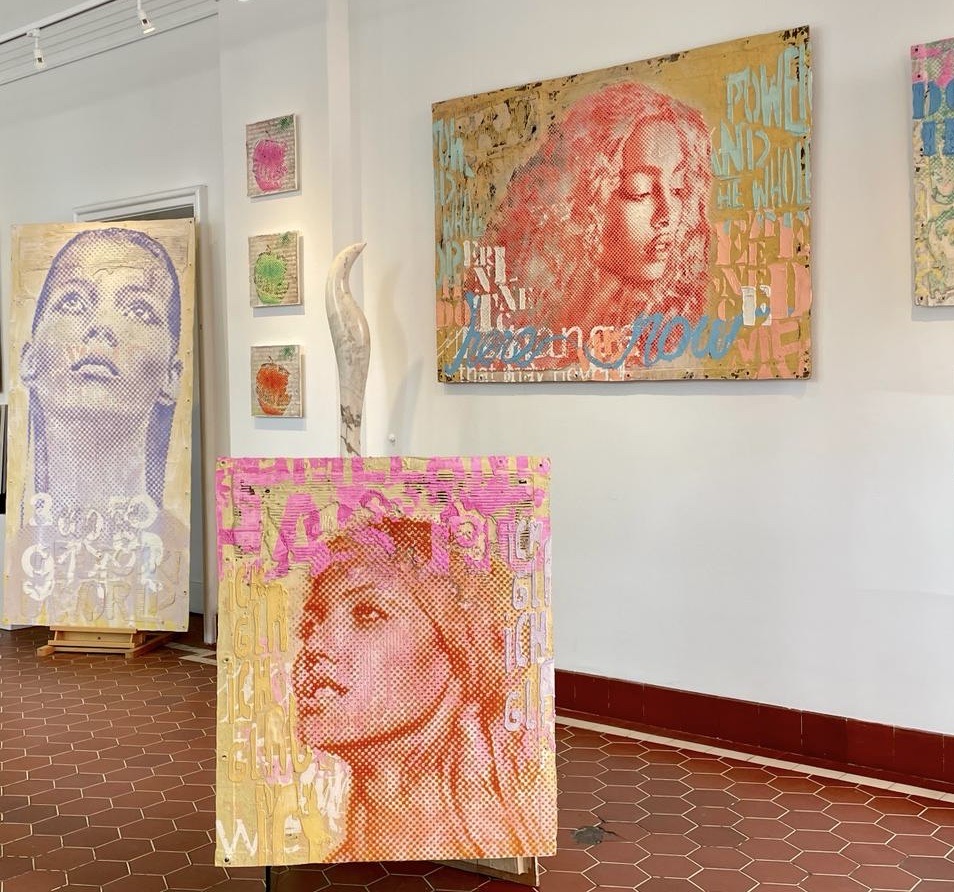Patrizia Casagranda

Women have had a long battle, predominantly about being the victims of discrimination and inequality in all sorts of spheres over the generations. What’s not often talked about is the strength of women, their resourceful problem solving, with their mental and physical attributes that are sometimes subtly concealed in what is occasionally termed as femininity. What women actually are; powerful warriors, survivors and leaders, and this is portrayed in the context of sculptural and textural, mixed media portraits by artist Patrizia Casagranda, which are currently on display at the Venice Biennale. The artworks could be described as two dimensional rugged sculptures, reminiscent of the Ben Day dots per square inch printing of the old comic books with the old soul funk posters back in the 70’s. However, with soft shades of muted and subtle tones, yet all of Patrizia’s artworks are made of scrap, things you find in bins or rubbish mountains. Beyond the re-creation of making art from waste, her work has the political counter-movements within her subtexts that holds your attention, using her love of typography she plays on the narratives, whether they are extracts from poems by iconic legends, epigrams or girls who collect rubbish from the streets she enables us to see the bigger picture.
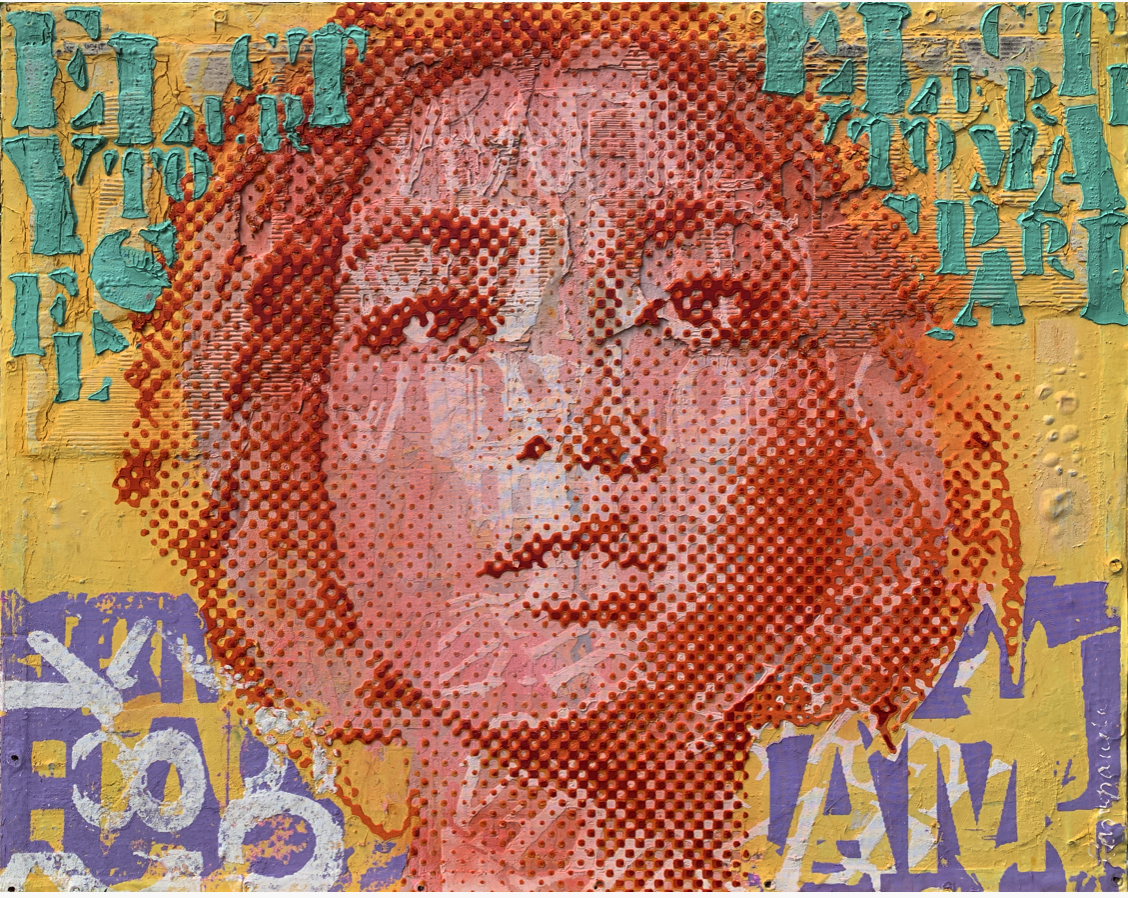

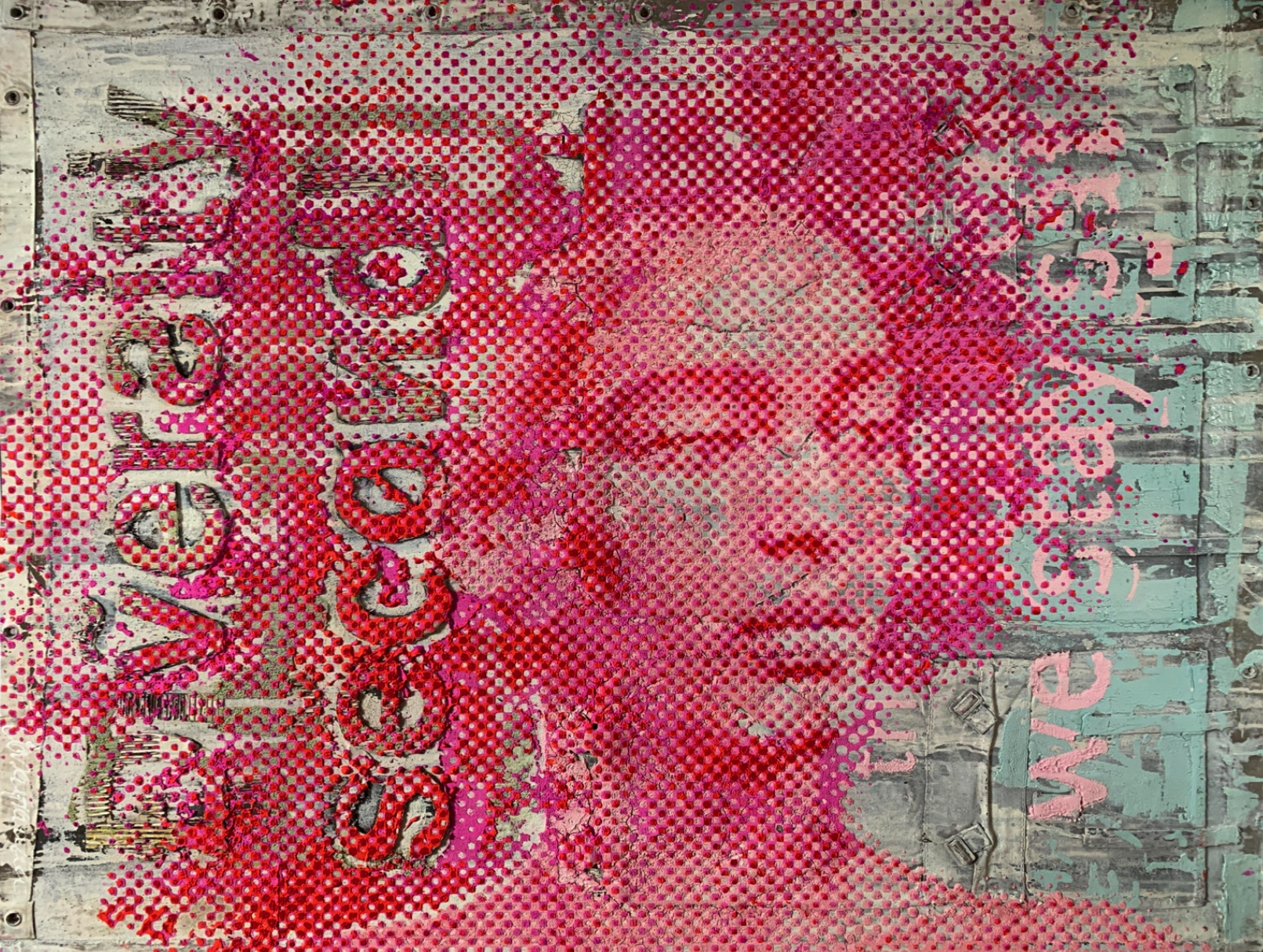
Initially she became inspired by the garbage collectors in India, the young women who go through the rubbish and then sell it back into society, “It’s recycling of sorts”she explains, inspired by their efforts, she started to create artworks of these girls, with rubbish she had bought from them, and the concept took off from there. Portraits of women, whether iconic heroines, legendary figures in history, she created an oeuvre of mixed media, with a combination of old tapestries, boat linen, concrete, all sorts of waste and the painted dots are from an old vintage age. “I bought the paints from a store that was insolvent”. The business had been around since the 17th century she tells me “They are great colourfast pigments” she explains. At first the pictures seem decorative, but behind each picture there is a story. In this series, with the Indian garbage collectors,”It was their material I used in the background of the pictures and made portraits of the girls, because I was fascinated by their joy of life, although they live in the slums in India” she explains. Patrizia works with charities, the sold artworks support some families, “To try to give the children a good education, so that they have a better life later” she emphasises.
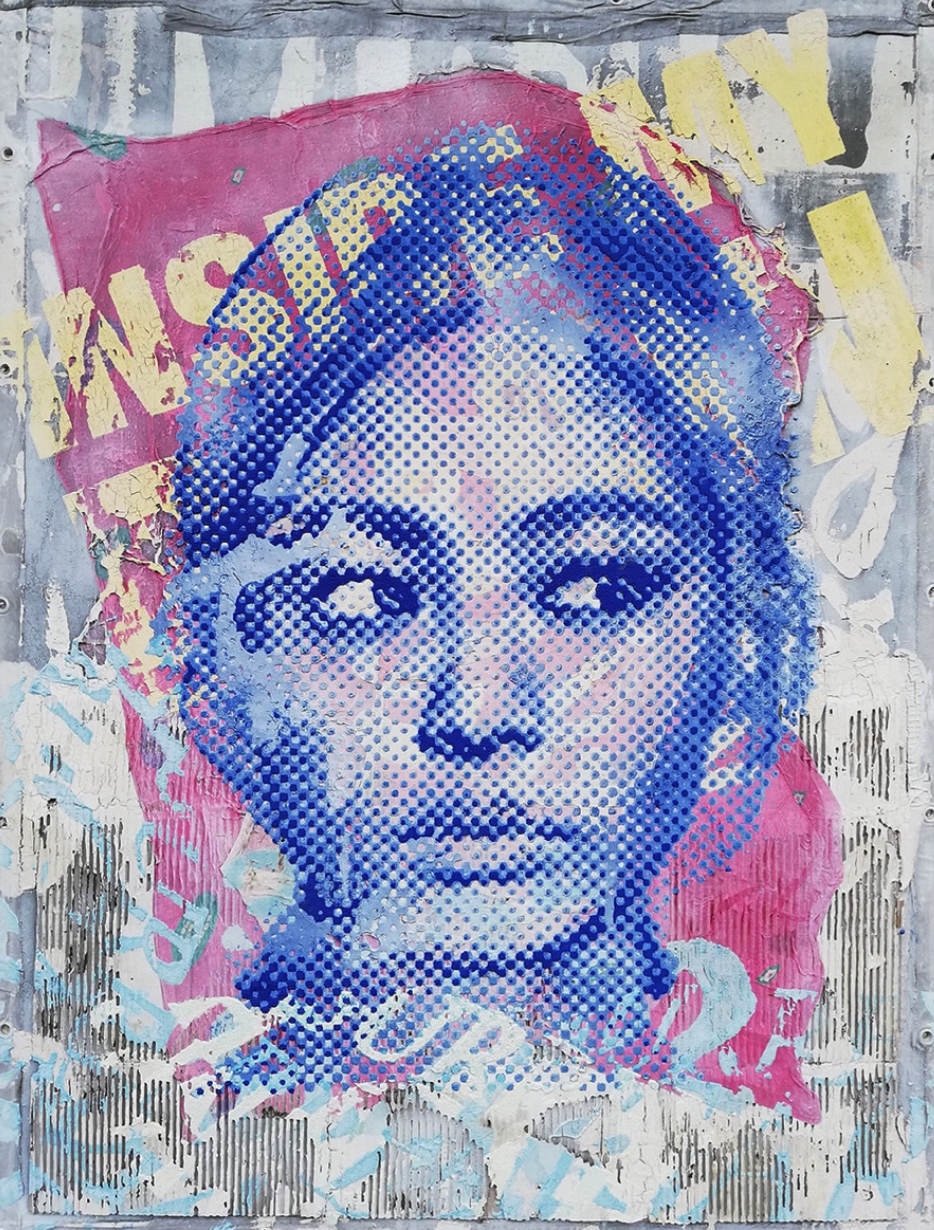
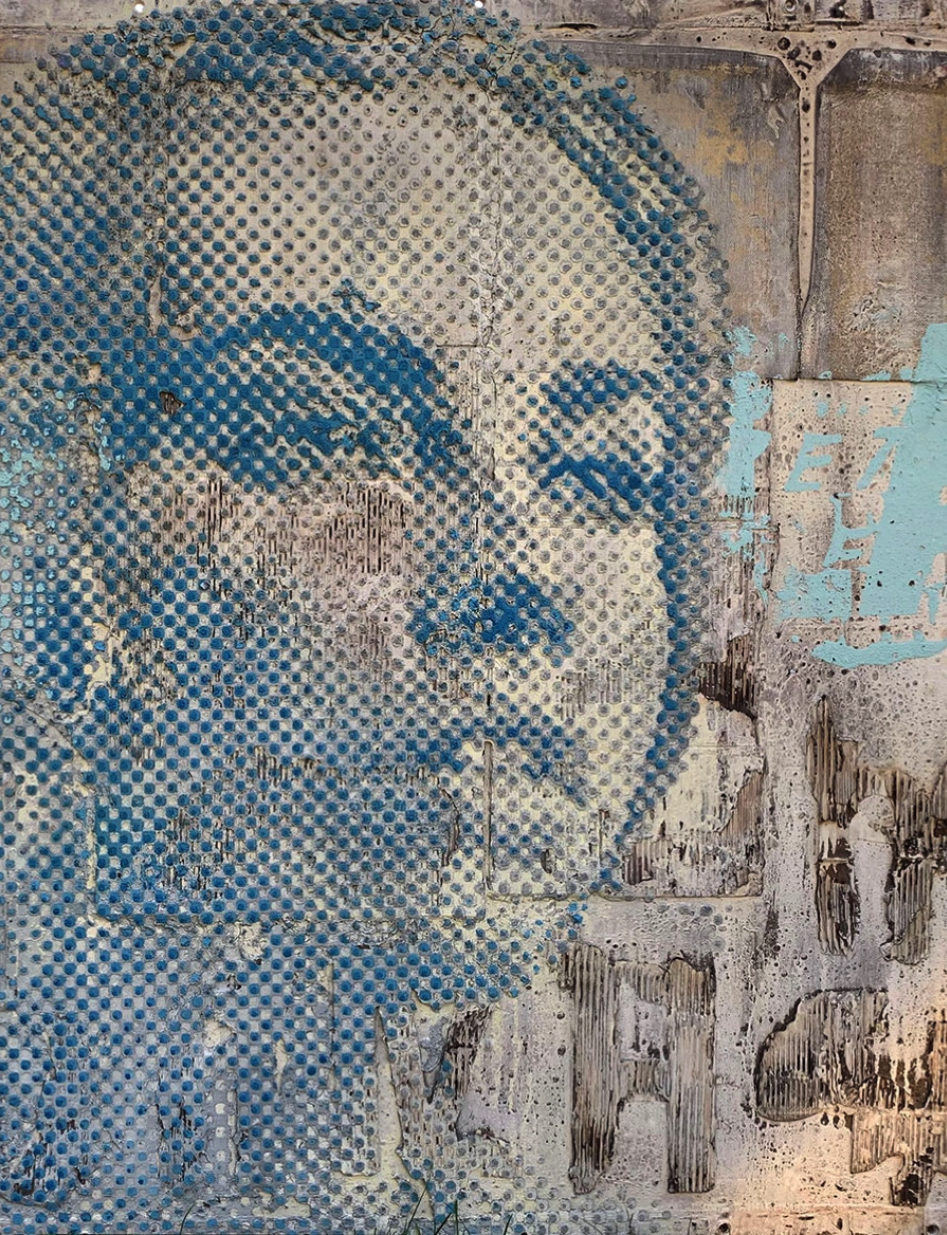
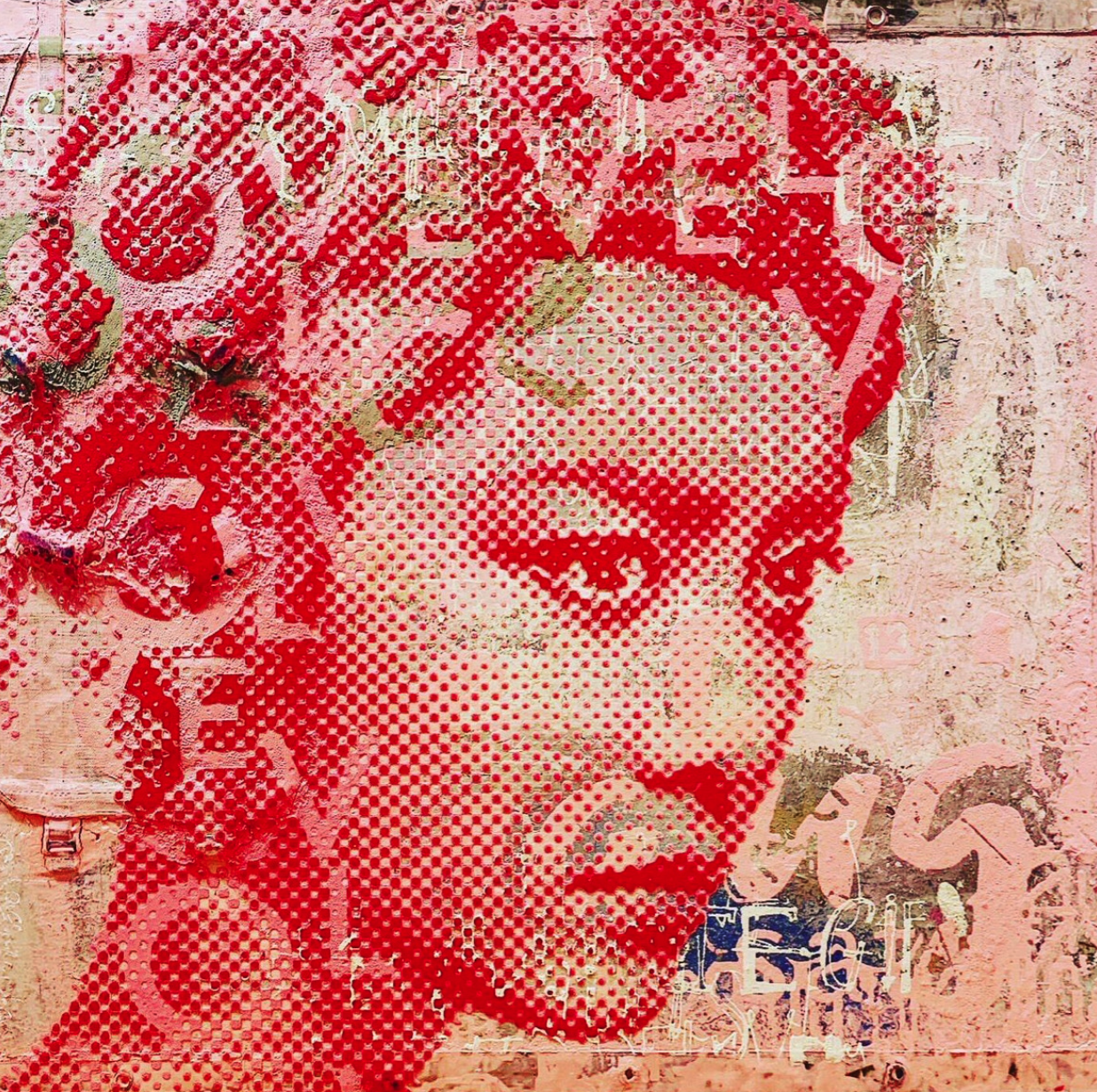
Our interview takes place over the phone, and we talk between German and English, she was born in Stuttgart Germany and raised by her German mother and Italian father, her father had been a ‘Gastarbeiter’ when he met her mother; Patrizia is fluent in Italian, German and English. She lives in Krefeld, Germany and her studio is in the Netherlands, an old farm in the middle of the countryside, she tells me. We talk about whether narrative is important in her work “I love stories behind the images” she explains, and she then tells me the story about how she became an artist and finding her distinctive style. She had always been interested in typography, as well as words, poetry and statements that inspire,”It first started with photomontages and stencils. Like the street art artists. Then I was fascinated by the structures and the ancient walls of Pompeii, inspired by the marriage of Cupid and Psyche” she explains. When one looks at the walls of Pompeii, it is evident that the writings and artworks were the graffiti of the time, by the citizens before Mount Vesuvius erupted in A.D. 79 that buried the city.
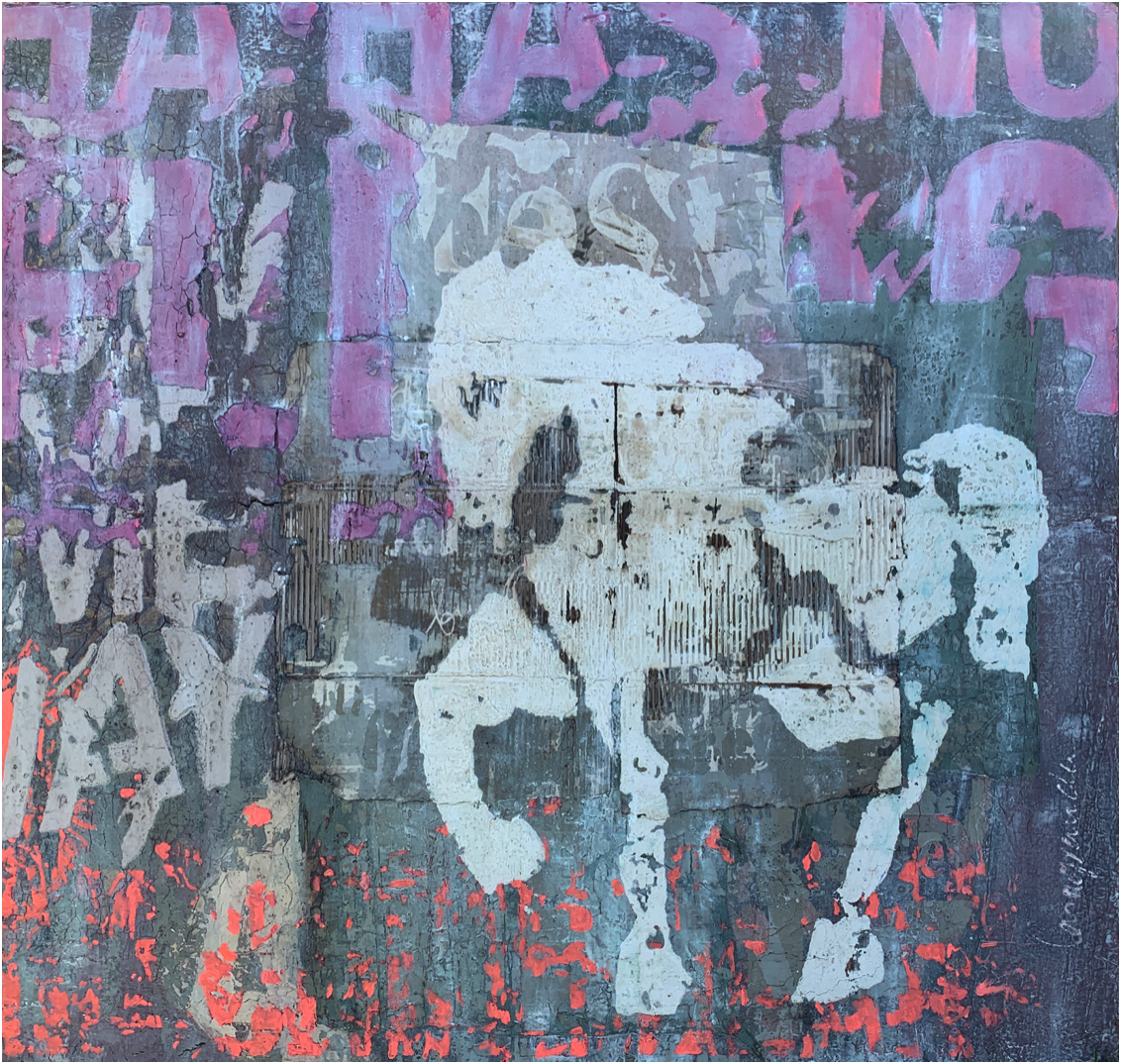
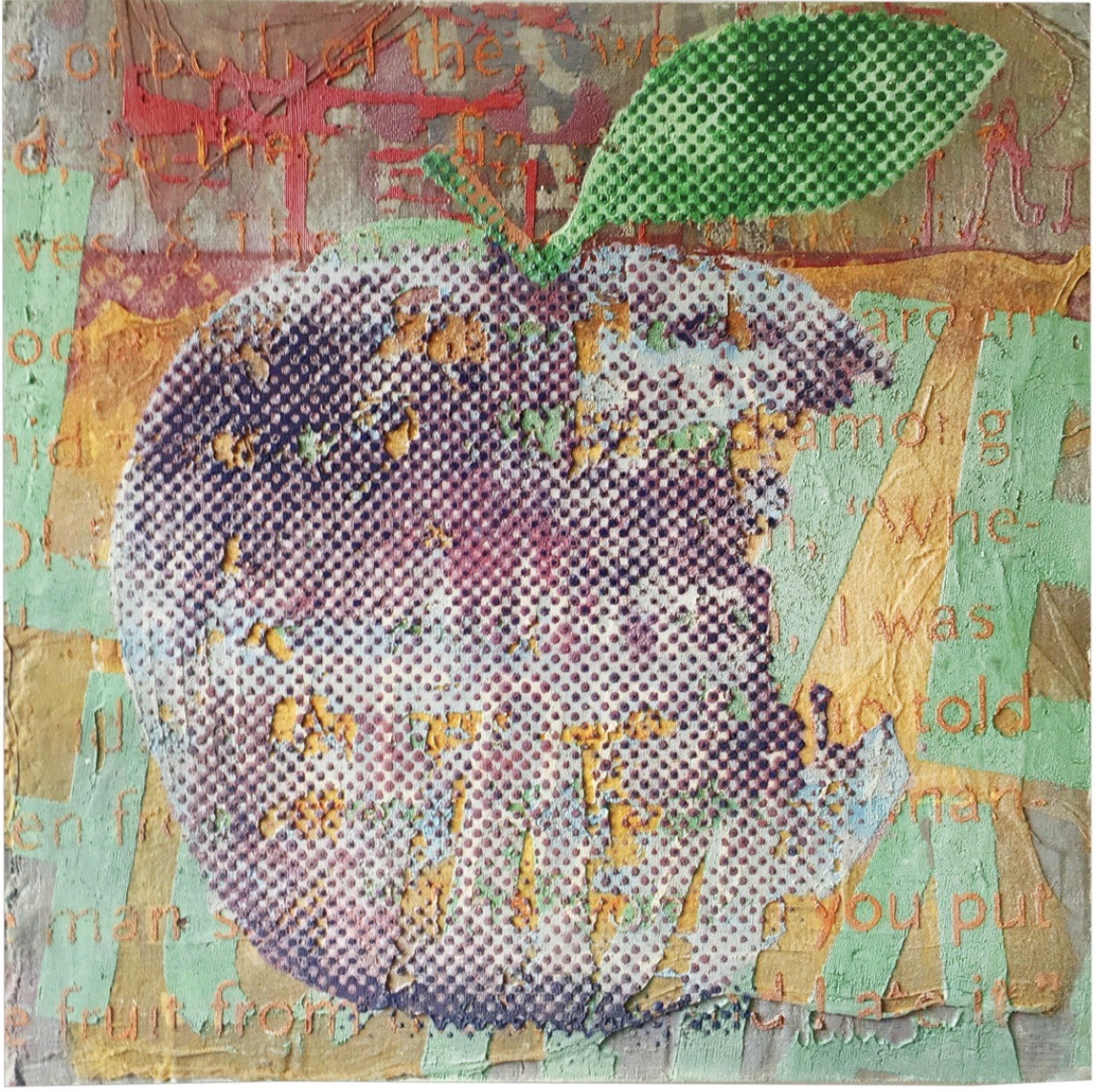
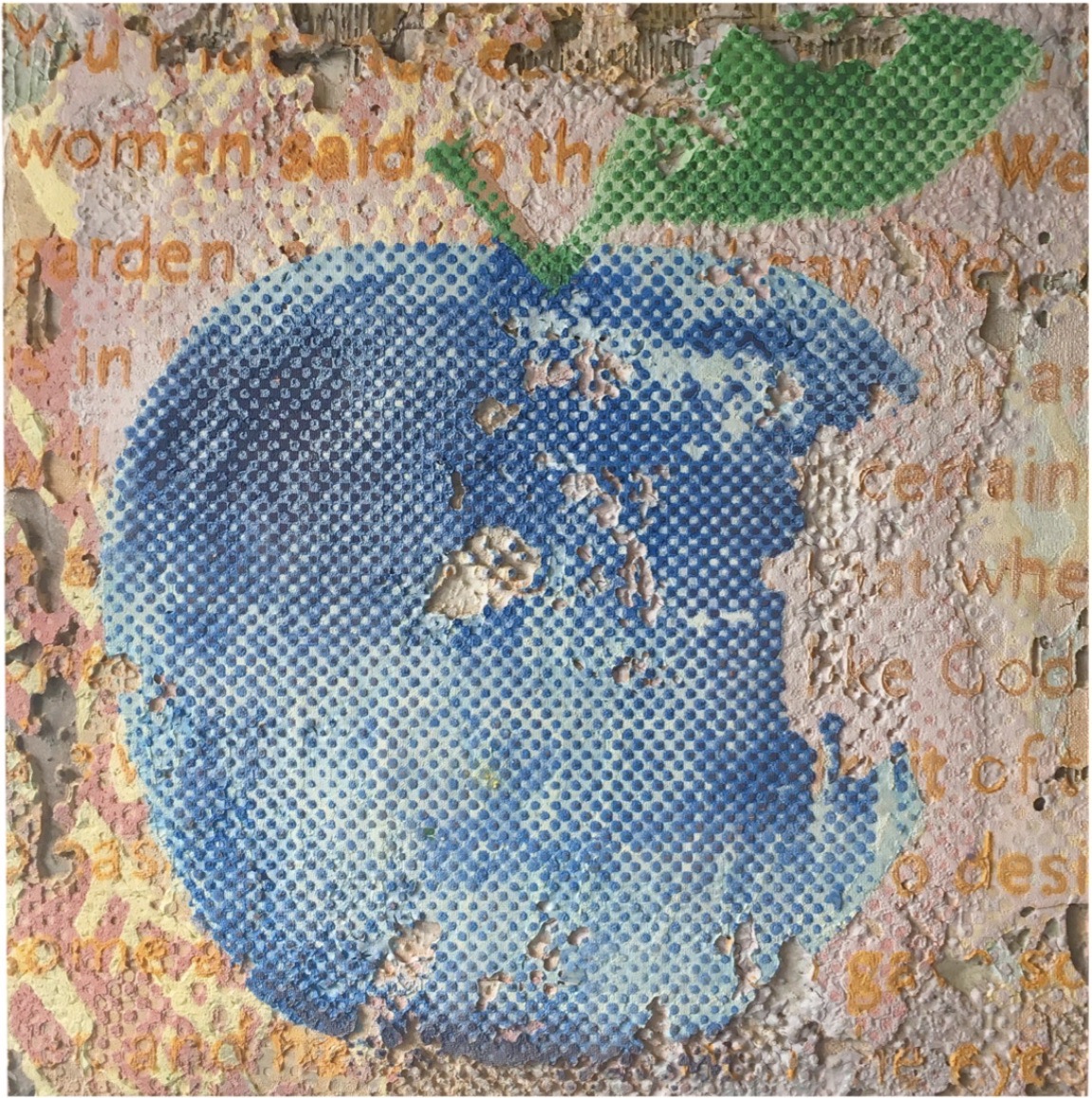

We talk about her youth, she explains she was always interested in art she recalls always designing and creating things, at 13 she started a painting course with an artist and oil painter who was also her neighbour. She reminisces about discovering her childhood diary when moving home and finding an extract written when she was nine years old, and that at the time she already knew she wanted to be an artist. However her journey veered down a different path for a while. Her education in art academies in illustration and technical college in the Lower Rhineland area, led her to choose a profession as a graphic designer. A friend of Patrizia, with whom she shared a studio, inspired her to turn her passion into her profession. “He saw my portraits and said I should go to galleries and show them. I did and found my first gallery in Wiesbaden, which promptly sold 3 pictures within a month. That was the beginning” she tells me. The year was 2016, she continued developing her unique technique and style with a friend. “That was the breakthrough for me,” Patrizia tells me.
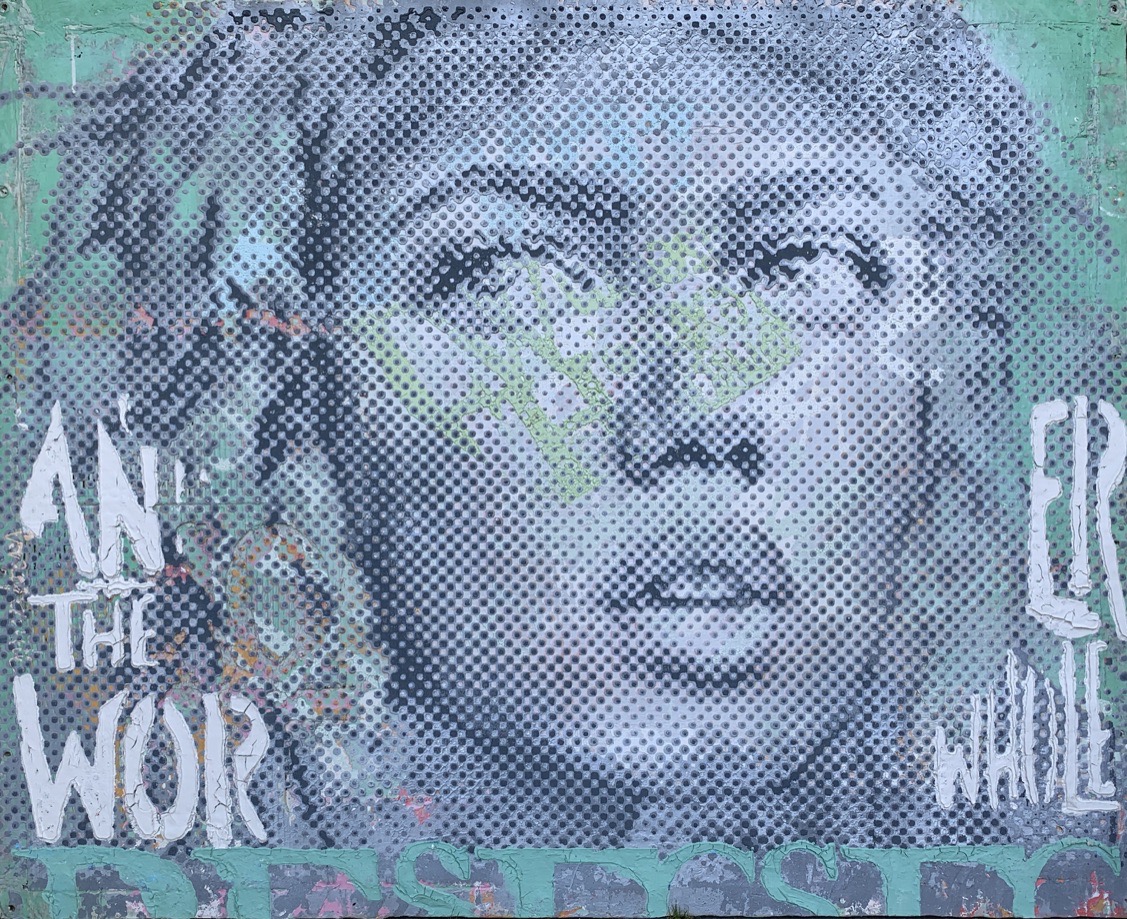
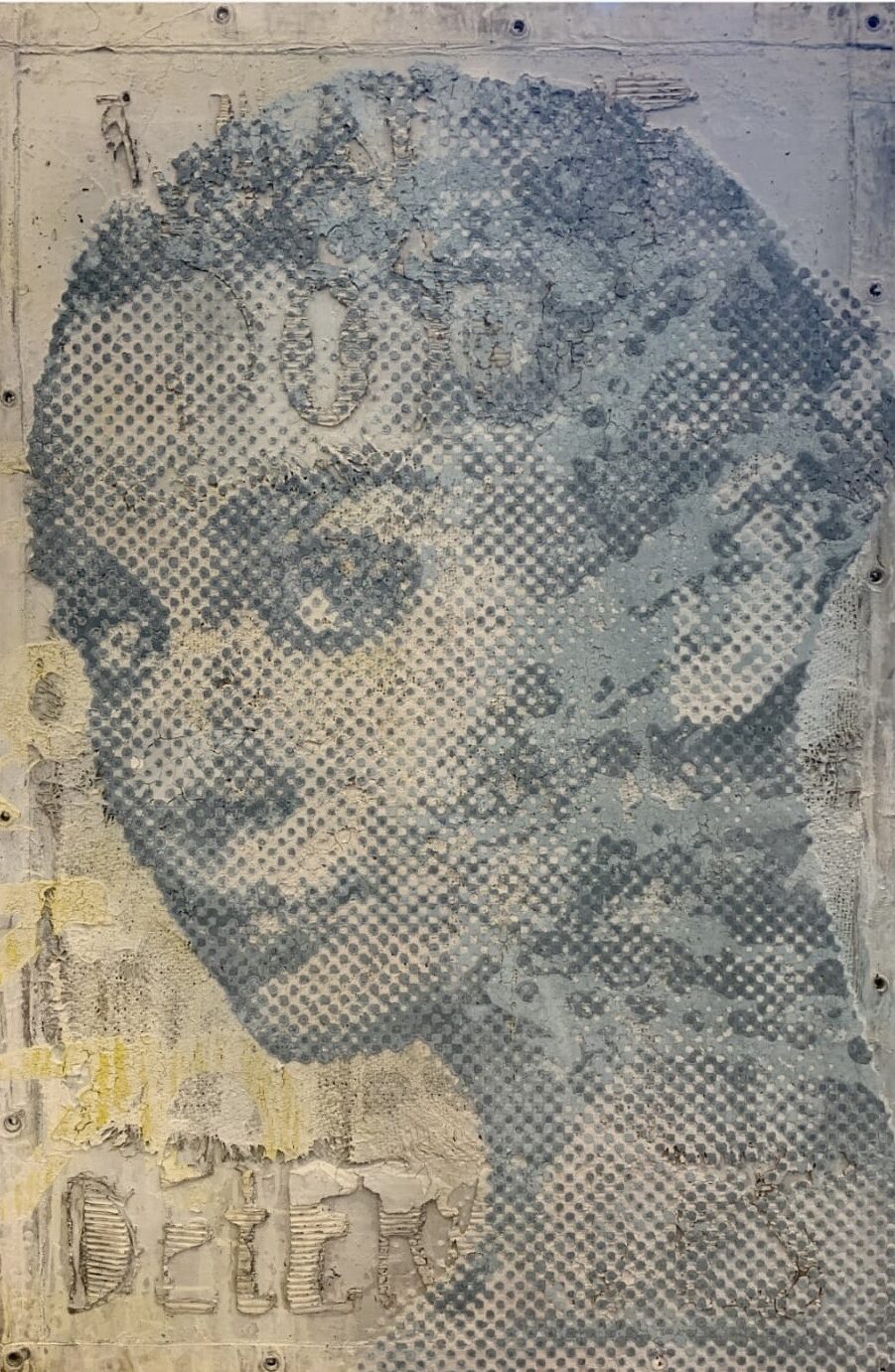
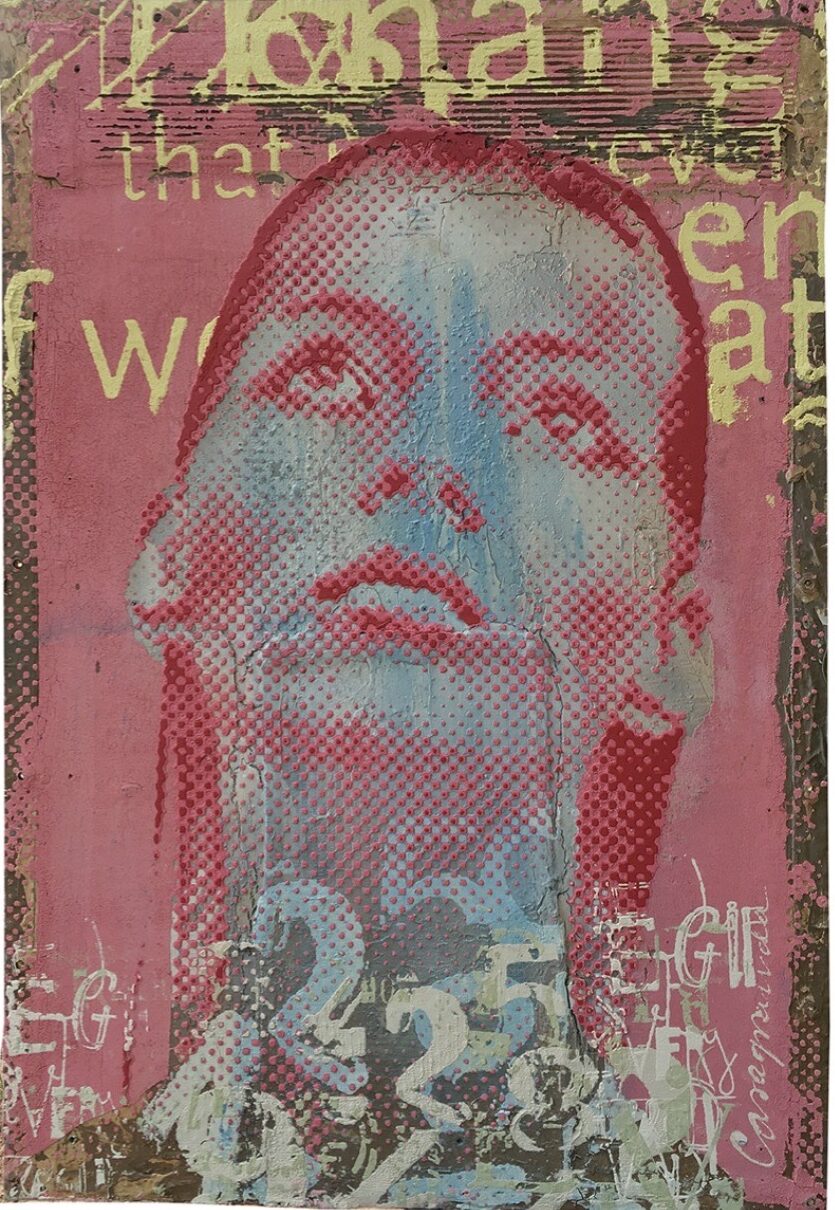
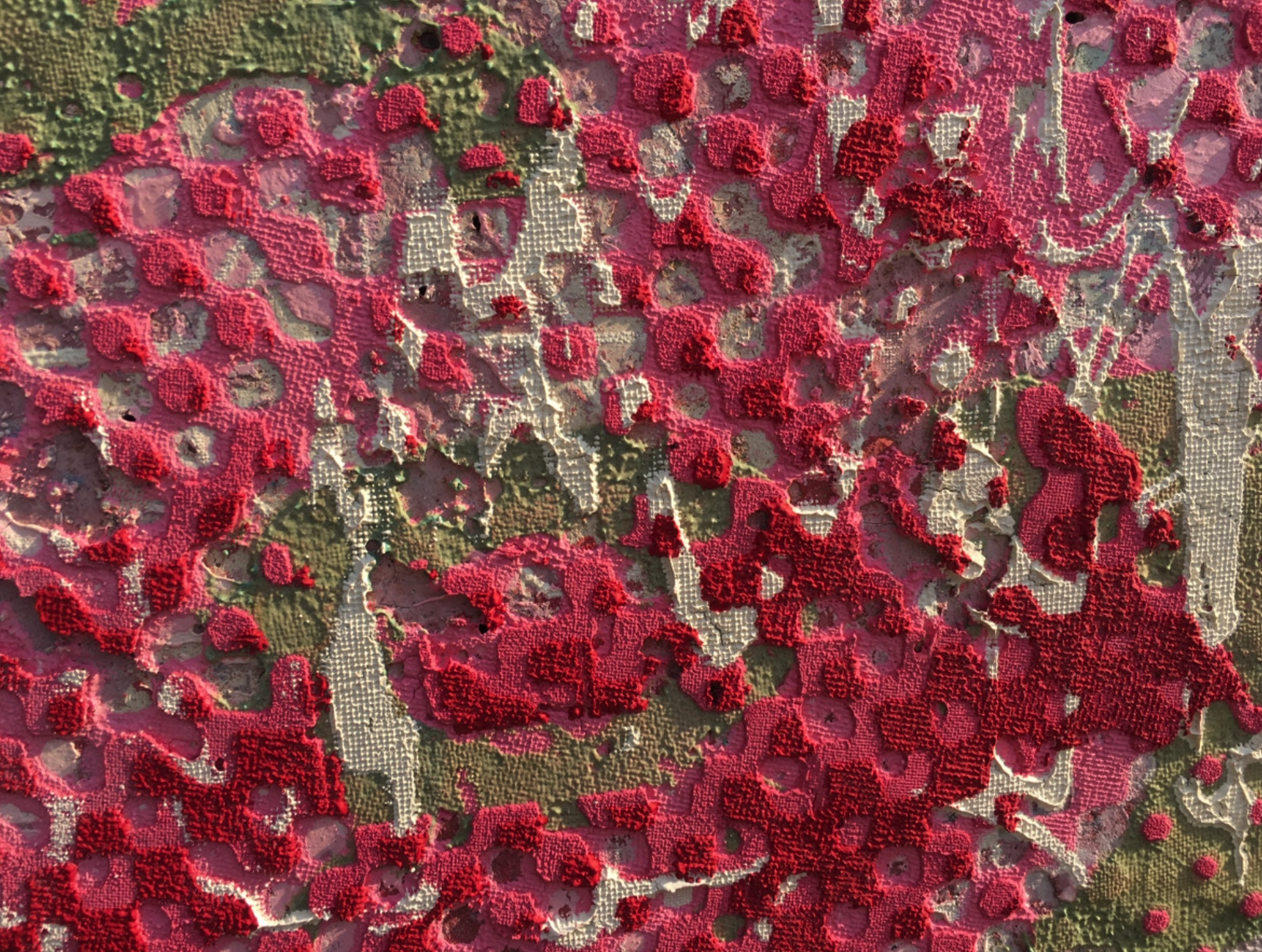
We discuss what she considers her greatest achievement in her career so far. “It’s not one thing. It is the whole” she explains. Her style as well as being novel, the recognition value is very high, most people recognise her work instantly, she tells me and she has appeared in major newspapers and she has additionally won several awards. “A special award is certainly that of the Florence Biennale” she tells me. “This is an award of 476 artists to have been selected for the prize”. Recently her portraits have been hanging alongside legendary artists such as Picasso at a biennial in Macedonia, which adds to the excitement; and if you fancy a visit to Italy you can see her work which is currently being exhibited at the Venice Biennale. Her work has already been exhibited around the world, Los Angeles, Miami, New York, Dubai, never mind all around Europe, from Zurich, London, Paris, Stockholm, the list is long.
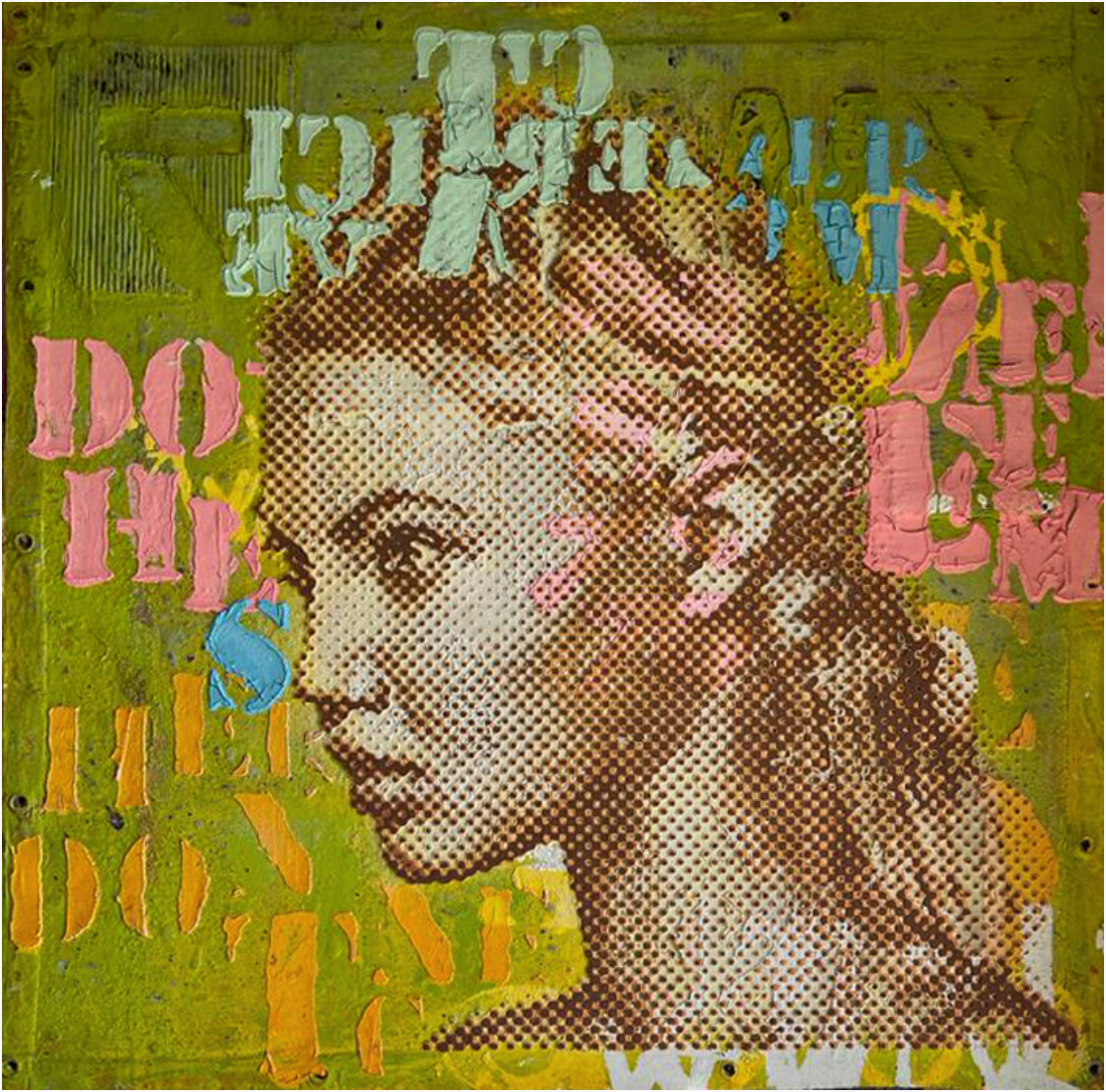

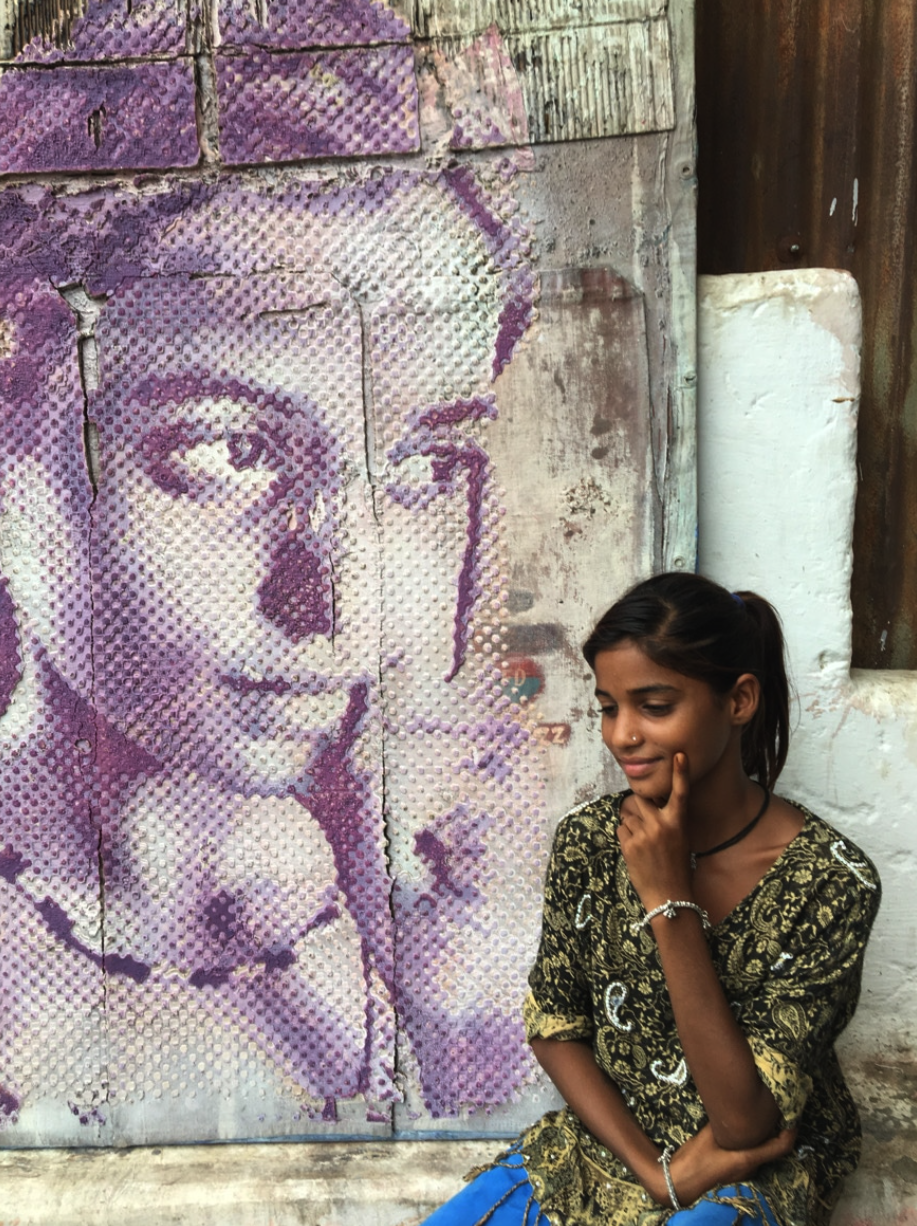
When I asked her who her biggest influence is artist or otherwise. “I am influenced by the emotions that a picture exudes”she continues “I love Banksy’s statements and his political engagement, like The Carousel in Palestine; Simply brilliant” or the Spanish artist Manolo Valdés is another influence. It is this combination of the then and now, whether it’s her artworks of the apple series, that tap into the realms of the metaphoric fairy story of the forbidden fruit, or the raw reality of inspired female icons, that resonates so powerfully. I read an article recently where artist Damien Hirst described art as alchemy, that the Mona Lisa is just paint on canvas, it resonated so powerfully. Patrizia’s work magnifies this concept, to create art out of waste, that there is value in everything; it all just depends on how we look and perceive it.
Interview: Antoinette Haselhorst
